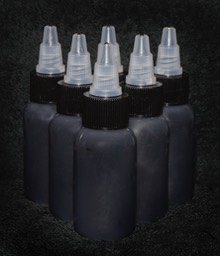Abrasive Compounds
Starting in the mid to late 1800s, professional barbers were known to tune-up the edges of their straight razors with abrasive compounds on linen and leather strops.
When I started out using a straight, I started honing them at the same time. That’s a lot to learn, but I like a challenge and a few nicks and little blood didn’t seem all that terrible. My biggest hurdle, it seemed, was getting the edge ‘sharp enough’. That final bit of keenness seemed to be somewhat elusive, so I followed a suggestion and I started using an abrasive paste on a cloth strop to ‘final finish’ my razor’s edge.
Abrasive compounds are not a new subject to me. My grandfather was a very well-known lapidary, he taught my father how to cut and polish gemstones, and I picked up some of the trade along the way also. We charged many laps with all kinds of abrasive powders for the purpose of polishing precious and semi-precious stones.
So - I got ‘into’ the world of abrasives. I learned some of the lingo and shop-talk and made a few friends in ‘the business’. In some ways, sharpening steel is different than polishing stones, but in other ways it’s the same. After working and experimenting with some of the powders I was already familiar with, and some I was totally unfamiliar with - I came to a few conclusions - some obvious, others not so obvious.
1 - particle size is important but it’s not the whole story.
2 – particle size distribution is a huge part of the story.
3 - Particle concentration is also a huge part of the story.
4 - The substrate matters, a lot.
5 -Pressure matters, a lot.
6 – The edge’s pre-existing condition matters, a lot. .
7 - Particle distribution/concentration concerns are not perfectly linear.
8 – Abrasives on a substrate act differently than when they’re fixed in a binder.
9 – The same abrasive in different binders will yield different results every time.
10 - Most commercial abrasives have a shockingly broad PSD.







